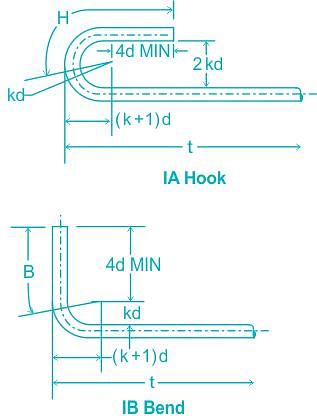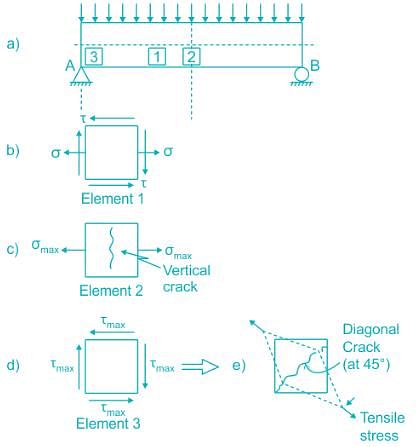Test: Design for Shear and Torsion - Civil Engineering (CE) MCQ
10 Questions MCQ Test - Test: Design for Shear and Torsion
Which type of cables are advantages in reducing the effective shear?
Lifing of the corners of the slabs is prevented by providing ________ reinforcement.
| 1 Crore+ students have signed up on EduRev. Have you? Download the App |
In R.C.C. roof, straight bar length of hook taken as (where D is the diameter of the bar)-
The various codes recommend empirical relations to estimate _____
According to IS 456 ∶ 2000, The expression for equivalent shear is given by ________.
WHERE
VU = SHEAR
VE = EQUIVALENT SHEAR
TU = TORSIONAL MOMENT
b = breadth of the beam
Which type of shear reinforcement should be provided for members with thin webs?
As per IS-456: 2000, Side face reinforcemnet shall be provided along the two faces of a reinforced concrete beam, when the depth of the web exceeds
Shear reinforcement is required to prevent propagation of _______.
The pre and post tensioned members with bonded tendons bond stress between _______



 Where Ve = Equivalent Shear, Vu = Nominal Shear, Tu = Torsional Moment, b = Width of beam
Where Ve = Equivalent Shear, Vu = Nominal Shear, Tu = Torsional Moment, b = Width of beam , Where Mel = Equivalent bending moment, Mu = Bending moment at the cross section, Tu = Torsional moment, D = Overall depth of beam, b = Width of beam.
, Where Mel = Equivalent bending moment, Mu = Bending moment at the cross section, Tu = Torsional moment, D = Overall depth of beam, b = Width of beam.
















